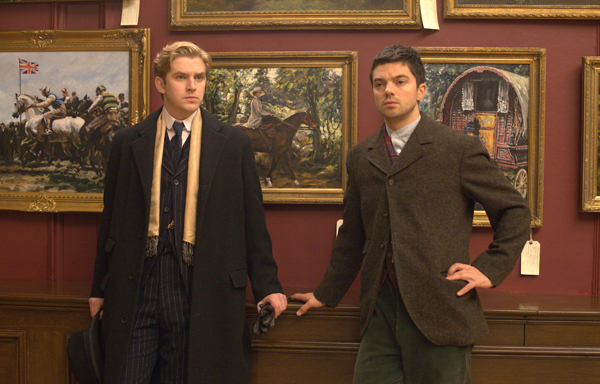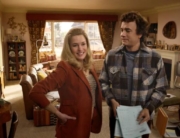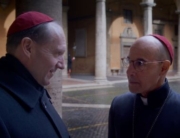Summer in February is based on a novel by Jonathan Smith (who also wrote the screenplay), which is in turn based on the life of English painter Alfred James (here called A. J.) Munnings. Well-known for his paintings of horses, Munnings’ larger-than-life personality makes it obvious why he could be an interesting narrative subject. The film, however, falls short of clearly demonstrating his influence on British art and why he is worth considering beyond his obstreperous personality and, at least here, tragic private life.
Set in Edwardian Cornwall, in southern England, it focuses on an artist’s colony, the Newlyn School. Munnings (Dominic Cooper) is on the brink of fame when Florence Carter-Wood (Emily Browning) enters his life. She is from a wealthy London family, as opposed to Munnings’ working-class background. She comes to Cornwall to visit her brother and catches the eye of both Munnings and his best friend, military man Captain Gilbert Evans (Downton Abbey’s Dan Stevens). An artist herself, Florence quickly becomes a part of the more freethinking and boisterous set.
Gilbert’s sweet but quiet ways are not quick enough to gain Florence’s attachment. After painting her on horseback and helping her with her sketches, Munnings asks Florence to spontaneously marry him and she accepts. What follows is a fairly typical love triangle, made more complicated by characteristically wild artists as well as the Great War on the historical horizon.
Directed by Christopher Menaul, best known for British television series like Ripper Street, Summer in February certainly has the feel and look of a BBC miniseries. The setting of rugged seaside Cornwall is beautiful, and it is not hard to imagine why so many artists took inspiration from the area. The opening scenes of the colony and its colorful characters are the most engaging, and it would have been nice to see them fleshed out further. Artist couple Harold and Laura Knight (Shaun Dingwall and Hattie Morahan) are particularly intriguing, but stay well in the periphery.
As with many period pieces, the pacing is slow. Unfortunately, in Summer in February, the pace doesn’t build to any kind of emotional suspense. No one is well established, and their actions seem to come out of nowhere, especially in the case of Florence. While Munnings is always seen as a wildcard, the audience never really gets to know Florence. Her actions seem terribly overdramatic without much cause. Stevens perhaps makes the best effort as the rejected Gilbert, though fans of Downton may be disappointed he left the series for such a routine period piece.
With so much historical goodies lying in the margins of the story, I found myself wishing for more connections to the world surrounding these characters. The viewer won’t learn much about the Newlyn School or Munnings. There’s a lot under the surface of Summer in February, but it is held back by the melodramatic love story.







Leave A Comment